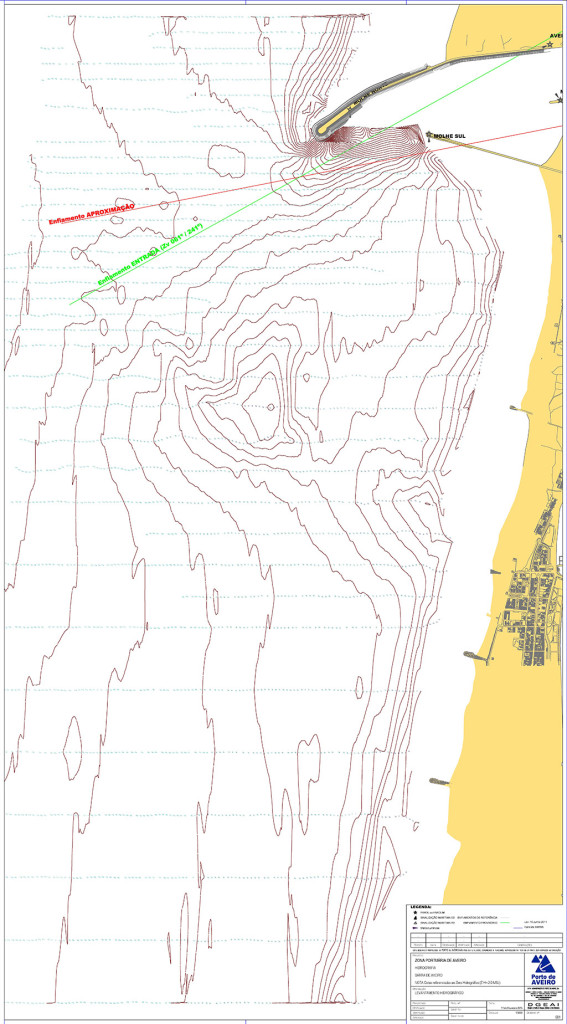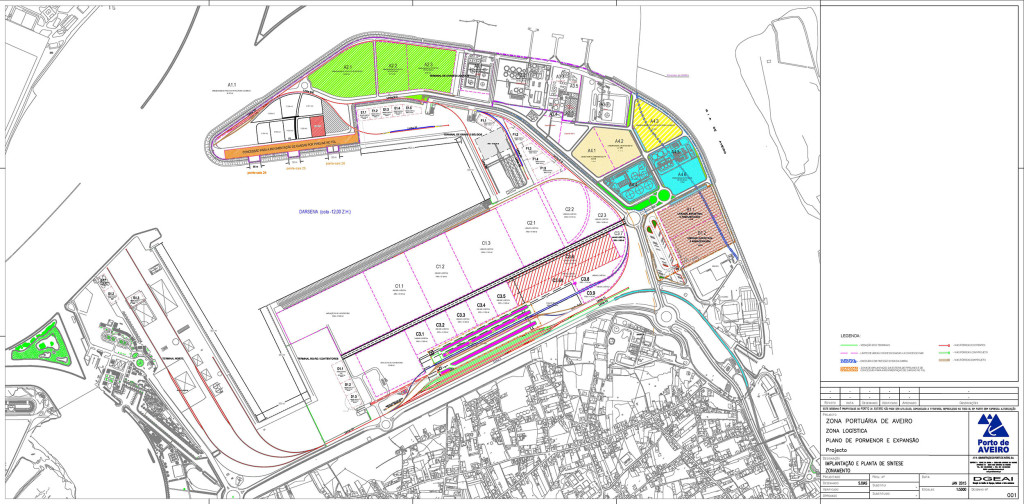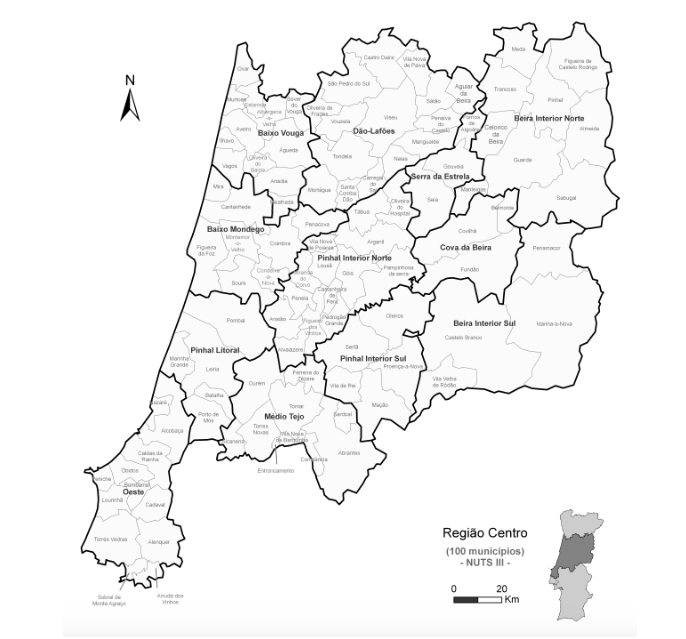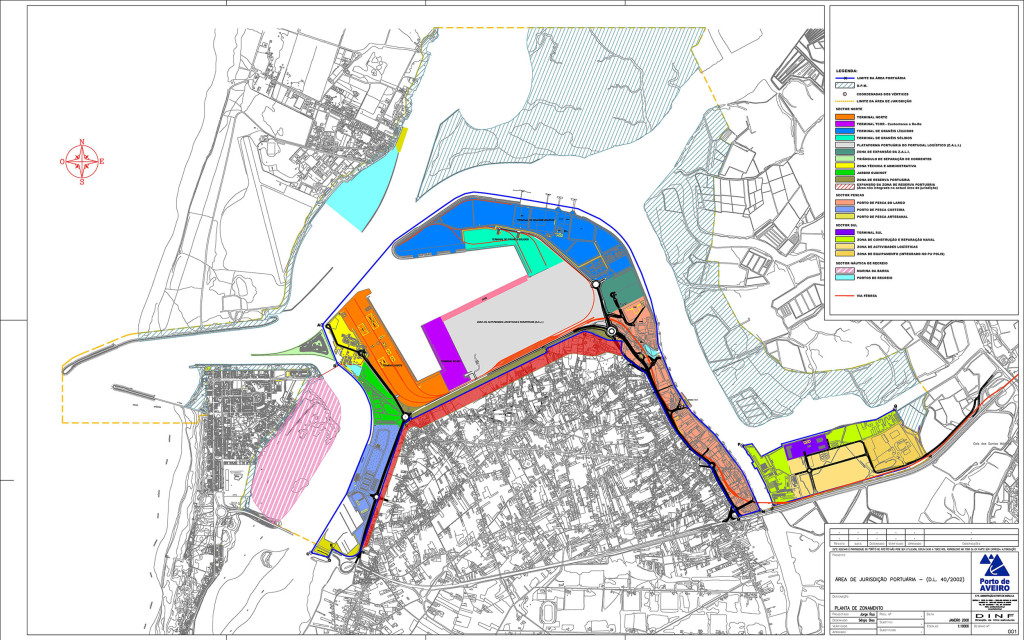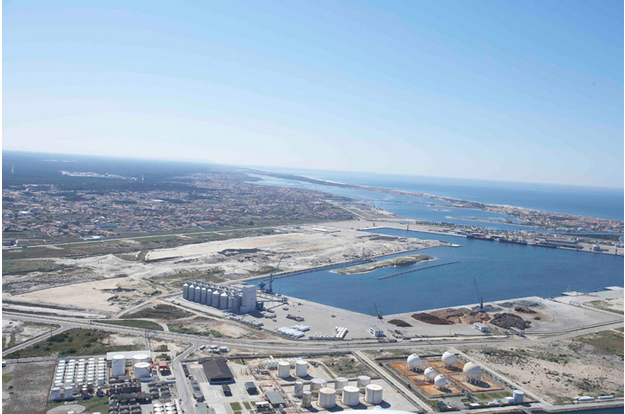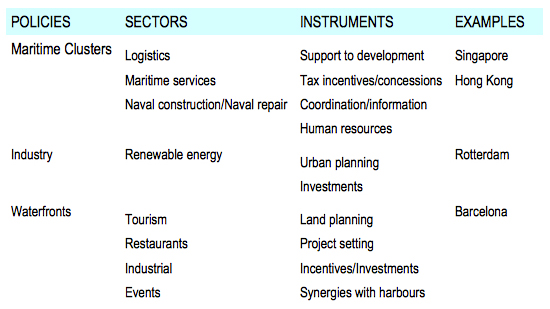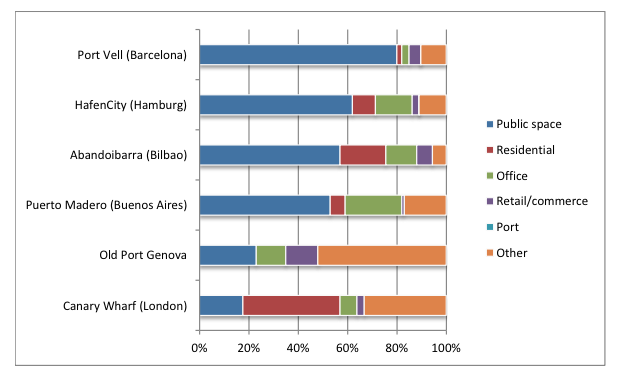The city of Aveiro has undergone several physical changes throughout the centuries. In the 18th century the volatile maritime currents and the change in the flow led to the successive closing of the seaside, which caused problems in the connection between the urban area and the sea (Arroteia, 1998). These changes to the navigation, based on the constant alteration of the bar due to erosion, propelled at the time various development and rupture crisis in the city of Aveiro (Gaspar, 1983:92).
Description and explanation of general and universal values of the local experience at the Harbour of Aveiro and the Centre Region
Throughout the 18th century the silting of the bar and its moving South created a distance between Aveiro and the sea, thus making navigation precarious, which contributed to the decadence of the harbour.
In 1808 the bar of the Harbour of Aveiro was open, which propelled the construction of the Harbour at its present location (Arroteia, 1998:56).
This location currently conditions the development of the Harbour, given the fact that the characteristics of the access canal limit the size of the ships to ten meters draught [1] and two hundred meters long, thus making anchorage impossible to bigger ships. Figure below represents the hydrography of the access canal to the Harbour of Aveiro, on which it is visible the canal has areas which are -13,20 meters deep and the width between the north and south moles is quite diminished regarding the entry of ships bearing a draught larger than -10 meters.
The restriction on draught and size of the ships block the development of the Harbour of Aveiro if compared to other Portuguese harbours, namely in what concerns cargo and passenger transportation (cruises). It is relevant to highlight that limitation blocks the transportation of people and goods to other continents, the Harbour of Aveiro being thus directed to the destinations such as Europe and Africa, that given the profitability of the maritime transportation to other continents is associated to bigger ships and larger draught.
The overcoming of this limitation must imply a partial cut of the south mole and dredging of the access canal between both moles, so as to allow an increase in the depth of the canal. That is the only possibility for bigger ships to have access to the Harbour of Aveiro, allowing cargo transportation to other continents (as Asia or America.
Hydrographic map of the entry bar to the Harbour of Aveiro. (Source: APA, 2015)
Throughout time the harbour adapted to the changes in the surroundings, such as the start of various industries. Especially due to the presence of chemical industries, the harbour gradually grew in terms of package cargo to the detriment of container cargo.
Currently, due to the greater presence of industrial liquid and solid bulk, the transportation of container cargo is conditioned by the manufacture’s lack of specialisation in this sort of cargo. Access of ships to the harbour is also conditioned by the draught and size of the vessels.
Notwithstanding, there is a project for a new container platform interconnected to 12 railway lines departing from the platform and destined to the European hinterland.
Terminal ZALI. Logistic enlargement terminal for containers. (Source: APA, 2015)
The Centre Region of Portugal works as the natural hinterland [2] of the Aveiro Harbour, for which this territory has the greatest influence on the activity of the port infrastructure as well as it is also the most influenced region by the maritime Harbour of Aveiro.
Thus, land connection here reveals a reasonable development in what concerns the transportation of goods and people, namely by means of the road connection to Spain through A25 and the railway connection by means of the North line (connecting Porto to Lisbon). The connection to the whole Europe favours the link with multimodal land transportation, through the connection of the harbour to the North line (Portugal) and the line of Beira Alta (Portugal – Spain).
Nonetheless, there is no air connection but for the military aerodrome at the Base of S. Jacinto, whose purpose is limited to military and INEM [3] use.
However, this region presents an infrastructure deficit which may favour a multimodal transportation connection. Thus, the inexistence of a regional airport active in the transportation of people and goods, contributes to the undergrowth of the intermodality of transportation.This intermodality might purvey for the balanced development, sharing the costs per the various industrial clusters,[4] which are developed in the surroundings of the several transportation companies, as a support to them.
The interrelation of the regions may be a vantage point in favour of the Centre Region (NUT II), by means of the development of the Region of Baixo Vouga (NUT III), by having the Harbour of Aveiro as an anchor for the development of surrounding Regions, namely that of North Beira Interior (NUT III). In the scope of the Centre Region territorial area, Guarda, as part of the same territory, may contribute to the development of the Centre Region and the Harbour of Aveiro, through the current construction of the Enterprise Initiative Logistical Platform of Guarda (PLIE). Given it is a transborder platform and the connection to the Harbour of Aveiro being made by A25 and the Beira Alta line, both infrastructures shall contribute to the enforcement of the maritime connection and other means of transportation, namely land.
The Centre Region of Portugal currently presents a dynamic and diversified economic network, benefiting from the presence of the University of Aveiro which holds a very important highlighted status in the local, regional, national and international development within the areas of technology and environment. These areas allied to the existent transportation infrastructures make the Centre Region, namely the Baixo Vouga Region, an attractive business area, which contributes to the economic and social development of this territory.
Map of NUTS III. (Source: CCDRC,2014)
In this scope, the University of Aveiro contributes to the development of companies in the fields of telecommunication and computation, namely PT Inovação and SAPO, whose company headquarters are set in the city of Aveiro. The technology developed in these companies may be applied to the intermodal transportation, namely at the Harbour of Aveiro, given the fact that – as argued by Castells (2011:529) “(…) an optical fibre telecommunication system, (…) for the internal and worldwide connection via land and mobile lines. (…) five new airports being built (…) new harbours being built (…) creating the biggest port capacity of a region, in the entire world” – communication and Internet developed by PT and SAPO may be applied to the management of logistics and communication at Harbours.
Perspectives on the future development of the Aveiro Harbour and the Centre Region
Apart from the cargo ships anchored at the Harbour of Aveiro, this may be used as an anchorage for cruise ships in the South Terminal. Given that the Harbour is already served by a railway connecting Porto-City, a view which may contribute to the economic development of the city of Aveiro, by means of the tourism advertising that cruises usually offer.
The tourism which may outcome from the Cruises at the Harbour of Aveiro does not environmentally interfere with the city, considering the distance between the Harbour and the city. It shall contribute to the cultural, social and economic development of the city of Aveiro and of surrounding cities (such as Ílhavo) for it shall propel a greater number of visits to the cities, notwithstanding short lasting, given the fact that tourists have accommodation on board. However, consumption of goods and services during the day propels an economic stimulus for the city, for which these must be reinforced and enlarged to the services connected to cultural, gastronomic and beach related services.
Plant of the Harbour of Aveiro. (Source: APA,2008)
Photography Harbour of Aveiro. (Source: https://ww2.portodeaveiro.pt/sartigo/index.php?x=5806)
The key questions in this article are as follows (Table 1):
- How to increase local benefit with origin in the harbour and make is a growth source for the urban economy?
- Which are the policies for port cities?
Main political options to increase local port benefits. (Source: OECD, 2010:80)
Clusters are especially important for maritime domain because port and navigation industries depend on various specialised services (De Langen, 2002; Wijnolst,2006). Companies which participate in maritime cluster are asked a growing productivity by means of incentive which sets on price reduction and connection between suppliers and clients (Brett & Roe, 2010).
The success of maritime clusters contributes for the positive development of harbours and its surroundings. The maritime cluster consists of “all economic activities related to the arrival of goods and vessels” (De Langen, 2004:85). The first subsector of any maritime cluster is its harbour.
The amount of urbanistic interventions, functional and environmental regeneration, inherent to the waterfront has increased in the last few years.
At the edges of the population centers, the reacquisition of large costal collective (or public) areas may be performed offering in such a way spaces for leisure and social and cultural activities. These are areas which operate as central axis including public sidewalks, restaurants and leisure (beaches, sports and culture) (Portas,1999).
The development of the harbour – waterfront connection may embody an opportunity to create a new image for the city and the region.
The new waterfront shall motivate people to enjoy the coast and to share time with residents and tourists (Millspaugh, 2001). Various measures and instruments have been applied to a great part of the waterfront development throughout the last decades, covers its location marketing (being near water, marine, fishing, aquarium) applied tourism to the harbour (cruise Terminal), creating a maritime cultural heritage (preservation of the historical heritage) and organisation of great events which may attract residents and tourists.
The South terminal of the Harbour of Aveiro is the one which should have been turned into a leisure area as the above examples in various world harbours, namely Puerto Madero, Barcelona, Bilbao, Hamburg and San Francisco. The territorial area of the south terminal would provide a connection between the harbour and the urban centres of the cities of Aveiro, Ílhavo and Gafanha da Nazaré.
Territorial functional use in urban waterfront areas. (Source: OECD, 2010)
Notes
[1] The draught of a ship is the name given to the lowest point of the vessel, which is measured vertically from a point at its external surface.
[2] Geographic area of a port city which, concentrating a considerable economic activity, may create an urban network composed of small urban centres.
[3] Medical Emergency National Institute.
[4] Clusters are interconnected companies agglomerations, as they have similar features and are located in the same territory. This concentration maximices information exchanges.
Bibliography
Arroteia, J. C. (1998), Aveiro: aspectos geográficos e do desenvolvimento urbano, Aveiro, Universidade de Aveiro.
Brett, V. & Roe, M. (2010), The potential for the clustering of the maritime transport sector in the Greater Dublin Region, Maritime Policy & Management, 37(1), Routledge.
Castells, M. (2011), A era da informação: economia, sociedade e cultura, volume 1, Lisboa, Fundação Calouste Gulbenkian.
De Langen, P. W. (2002), Clustering and performance: the case of maritime clustering in The Netherlands, Maritime Policy and Management, 29 (3), Routledge.
De Langen, P. (2004a), The performance of seaport clusters: a framework to analyse cluster performance and an application to the seaport clusters of Durban, Rotterdam and Lower Mississippi, Rotterdam, Erasmus University.
De Langen, P. (2004b), Governance in Seaport Clusters, Maritime Economics and Logistics, 6, Rotterdam, H E Haralambides.
Gaspar, J. G. (1983), Aveiro: Notas Históricas, Aveiro, Câmara Municipal Aveiro.
Millspaugh, M. (2001), Waterfronts as catalysts for city renewal, Waterfronts in Post-Industrial Cities (edited by Richard Marshall), London, Spon Press.
OECD (2010), The Competitiveness of Global Port-Cities: Synthesis Report, Paris, Edited by Olaf Merk.
Portas, N. (1999), The Maturity of the Waterfront, Pádua, Marsilio.
Salvador, M. R. (2014), Maritime Clusters Evolution. The (not so) Strange Case of the Portuguese
Maritime Cluster, Journal of Maritime Research, Vol XI, N 1, pp 53–59.
Wijnolst, N. (2006), Dynamic European Maritime Clusters, Amsterdam, IOS Press BV.
Head image: Project for the improvement of the Coast Line of Aveiro from 26 February 1874. (Source: APA-IM-CA-000018, 1882)
Portugal: Porto de Aveiro e Região Centro como âncoras de desenvolvimento territorial
A cidade de Aveiro passou por várias transformações físicas ao longo dos séculos. No século XVIII, as correntes inconstantes e alteração de caudal causaram o encerramento sucessivo do cordão litoral, o que criou problemas de ligação da área urbana ao mar (Arroteia, 1998). Estas alterações das condições de navegação marítima, devido às constantes modificações da barra por erosão, determinaram na época, várias crises de crescimento e de rutura na cidade de Aveiro (Gaspar, 1983:92).
Descrição e explicação dos valores gerais e universais da experiência local do Porto de Aveiro e da Região Centro
Ao longo do século XVIII, o assoreamento da barra e a sua deslocação para sul, afastaram Aveiro do mar, tornando precárias as condições de navegação, o que contribuiu para a decadência do porto.
Em 1808, foi aberta a barra do Porto de Aveiro que impulsionou a construção do Porto na sua actual localização (Arroteia, 1998:56).
Esta localização condiciona actualmente o desenvolvimento do Porto, dado que as características do canal de acesso limitam a dimensão dos navios em dez metros de calado [1] e em duzentos metros de comprimento, impedindo a ancoragem de navios de maior dimensão. A Figura representa a hidrografia do canal de acesso ao porto de Aveiro, onde se pode verificar que o canal tem zonas com -13,20m de profundidade e a largura entre o molhe norte e sul é bastante reduzida para a entrada de navios de calado superior a -10 m.
A restrição de calado e de dimensionamento dos navios, impede o desenvolvimento do Porto de Aveiro em relação a outros portos portugueses, nomeadamente no que se refere ao transporte de mercadorias e de passageiros (navios de cruzeiro). É relevante salientar que esta limitação bloqueia o transporte de pessoas e bens para outros continentes, ficando o Porto de Aveiro essencialmente direccionado a destinos como Europa e África, dado que a rentabilidade de transporte marítimo para outros continentes está associada a navios de maior dimensão e de calado.
A ultrapassagem desta limitação, terá de passar pelo corte parcial do molhe sul e pela a dragagem do canal de acesso entre os dois molhes, por forma a permitir o aumento de profundidade do canal. Só assim os navios de maior dimensão poderão ter acesso ao porto de Aveiro, permitindo o transporte de mercadorias para outros continentes (como o asiático ou o americano).
Mapa hidrográfico da barra de entrada no Porto de Aveiro. (Fonte: APA, 2015)
Ao longo do tempo, o porto foi-se adaptando às alterações da envolvente, nomeadamente ao surgimento de industrias várias. Em especial, devido à presença de indústrias químicas, o porto foi crescendo na carga fraccionada em detrimento da carga contentorizada.
Actualmente, devido à maior presença de granéis líquidos e sólidos industriais, o transporte de mercadorias em contentores está condicionado pela falta da especialização da indústria na área da necessidade de carga contentorizada. Também o acesso dos navios ao porto, está condicionado pelo calado e dimensionamento dos mesmos.
No entanto, já existe um projecto para uma nova plataforma de contentores interligada a 12 linhas de caminho-de-ferro com origem na plataforma e destino o hinterland Europeu.
Terminal ZALI. Terminal de ampliação de logística para contentores. (Fonte: APA, 2015)
A Região Centro de Portugal funciona como hinterland [2] natural do Porto de Aveiro, peloque não só esta área territorial tem a maior influência sobre a actividade da infra-estrutura portuária como também é a região mais influenciada pela existência do Porto marítimo de Aveiro.
Neste sentido, as ligações terrestres desta Região assinalam um desenvolvimento razoável de transporte de mercadorias e pessoas, nomeadamente pela ligação terrestre a Espanha pela A25 e pela ligação ferroviária através da linha do Norte (que liga o Porto a Lisboa). A ligação a toda a Europa favorece a articulação do transporte multimodal terrestre, através da ligação do porto à linha do Norte (Portugal) e à linha da Beira Alta (Portugal-Espanha).
No entanto, a ligação aérea não existe, sendo apenas marcada pela existência do aeródromo militar da Base de S. Jacinto, cuja função se restringe ao uso militar e ao uso do INEM [3].
Esta região apresenta, no entanto, um deficit de infraestruturas que possam favorecer a ligação multimodal de transportes. Neste sentido, a inexistência de um aeroporto regional com dinâmica em transporte de bens e pessoas, contribui para o reduzido crescimento da intermodalidade dos transportes. Esta intermodalidade poderia proporcionar o desenvolvimento equilibrado da região, com custos repartidos pelos vários clusters industriais [4] que se desenvolvem na circunscrição das várias empresas de transportes, como apoio às mesmas.
A inter-relação de regiões poderá ser um ponto forte a favor da Região Centro (NUT II), através do desenvolvimento da Região do Baixo Vouga (NUT III), usando o Porto de Aveiro como âncora de desenvolvimento das regiões limítrofes, nomeadamente a Região da Beira Interior Norte (NUT III). No âmbito da área territorial da Região Centro, a Guarda como parte integrante do mesmo território, poderá contribuir para o desenvolvimento da Região Centro e do Porto de Aveiro, através da construção da Plataforma Logística de Iniciativa Empresarial (PLIE) da Guarda. Dado tratar-se de uma plataforma transfronteiriça e a ligação ao Porto de Aveiro ser efectuada através da A25 e da linha da Beira-Alta, ambas infra-estruturas irão contribuir para o reforço da ligação do transporte marítimo a outras modalidades de transporte, nomeadamente o terrestre.
A Região Centro de Portugal tem um tecido económico dinâmico e diversificado, valorizado pela presença da Universidade de Aveiro com uma função importante e de destaque no desenvolvimento local, regional, nacional e internacional no âmbito das áreas da tecnologia e do ambiente. Estas áreas aliadas às infraestruturas de transporte existentes tornam a Região Centro, nomeadamente a Região do Baixo Vouga, uma área atractiva para o tecido empresarial, o que contribui para o desenvolvimento económico e social desta área territorial.
Mapa das NUTS III. (Fonte: CCDRC,2014)
Neste âmbito, a Universidade de Aveiro contribui para o desenvolvimento de empresas da área de telecomunicações e computação, nomeadamente através da PT Inovação e da SAPO, cujas sedes empresarias se localizam na cidade de Aveiro. A tecnologia desenvolvida por estas empresas poderá ser aplicada aos transportes intermodais, nomeadamente no Porto de Aveiro, dado que – como refere Castells (2011:529) “(…) um sistema de telecomunicações por fibra óptica, (…) para a ligação interna e mundial via estações terrestres e telemóveis (…) construídos cinco aeroportos novos (…) construídos novos portos (…) dando origem à maior capacidade portuária de uma região, em todo o mundo” – as comunicações e a internet desenvolvidas pela PT e SAPO, poderão ser aplicadas na gestão de logística e de comunicação nos Portos.
Perspectivas de desenvolvimento do Porto de Aveiro e da Região Centro
Além dos navios de mercadorias ancorados no Porto de Aveiro, este poderá ser utilizado como ancoradouro dos navios de cruzeiros no Terminal Sul. Dado o Porto já estar dotado de linha de caminho de ferro de ligação do porto à cidade, esta perspectiva poderá contribuir para o desenvolvimento económico da cidade de Aveiro, através da divulgação turística que os cruzeiros normalmente introduzem.
O turismo que possa surgir através dos Navios de Cruzeiro no Porto de Aveiro, não interfere com a cidade no âmbito ambiental, dada a distância do Porto à cidade. Contribuirá para o desenvolvimento cultural, social e económico da cidade de Aveiro e de cidades limítrofes como Ílhavo, porque irá proporcionar um maior número de visitas às cidades, ainda que com temporalidade de permanência reduzida, pelo facto dos turistas ficarem alojados nos navios. No entanto, o consumo de bens e serviços durante o dia proporciona um estímulo económico nas cidades, pelo que deverão ser reforçados e ampliados os serviços ligados ao turismo cultural, gastronómico e balnear.
Mapa das NUTS III. (Fonte: APA,2008)
Porto de Aveiro. (Fonte:https://ww2.portodeaveiro.pt/sartigo/index.php?x=5806)
As perguntas chave deste artigo são as seguintes (Tabela 1):
- Como aumentar o benefício local com origem nos portos e tornar- estes em motores de crescimento de economia urbana?
- Quais as políticas para as cidades portuárias?
Principais opções políticas para incrementar os benefícios portuários locais. (Fonte: OECD, 2010:80)
Os clusters são especialmente importantes para o domínio marítimo, porque as industrias portuárias e de navegação estão dependentes de vários serviços especializados (De Langen, 2002; Wijnolst, 2006). Para as empresas que participam nos clusters marítimos é lhes exigido uma produtividade crescente através do incentivo da redução de preços e de ligações entre fornecedores e clientes (Brett & Roe, 2010).
O sucesso dos clusters marítimos, contribui para o desenvolvimento positivo dos portos e sua envolvente. O cluster marítimo consiste “em todas as actividades económicas que se relacionam com a chegada de bens e barcos” (De Langen, 2004:85). O primeiro subsector de qualquer cluster marítimo é o seu porto.
A quantidade de intervenções urbanísticas, de regeneração funcional e ambiental, inerentes à frente de água cresceu nos últimos anos.
Nas extremidades dos aglomerados, pode ser executada a reaquisição de extensas áreas costeiras de espaços colectivos (ou públicos) oferecendo espaços para actividades de lazer, sociais e culturais. Estas são áreas que funcionam como eixos de centralidade, que englobam o passeio publico, a restauração e o lazer (praias, desporto e cultura) (Portas,1999).
O desenvolvimento da relação porto – waterfront pode constituir uma oportunidade para criar uma nova imagem para a cidade e para a região.
A nova waterfront despertará nas pessoas o prazer de usufruir da faixa costeira e compartir o prazer com os residentes e turistas (Millspaugh, 2001). Várias medidas e instrumentos foram aplicados em grande parte do desenvolvimento das waterfront que tiveram lugar nas ultimas décadas que integra o marketing da sua localização (devido a estarem perto da água, marina, pescas, aquário) aplicando a função do porto à industria de turismo (terminais de cruzeiros de passageiros), criando a herança cultural marítima (preservação do património histórico) e organização de grandes eventos que possam atrair residentes e turistas.
O terminal Sul do Porto de Aveiro trata-se do terminal que deveria ser transformado em área de lazer conforme exemplos descritos anteriormente em varios portos mundiais nomeadamente Puerto Madero, Barcelona, Bilbao, Hamburgo e S. Francisco.
A área territorial do Terminal sul do Porto iria fazer a interligação entre o porto e os centros urbanos das cidades de Aveiro, Ilhavo e Gafanha da Nazaré.
Uso funcional territorial em áreas urbanas de waterfronts. (Fonte: OECD, 2010)
Notes
[1] O calado de um navio é a designação dada à profundidade a que se encontra o ponto mais baixo da embarcação, mede-se verticalmente a partir de um ponto na superfície externa da mesma.
[2] Área geográfica de uma cidade portuária que, por concentrar significativa actividade económica, pode criar uma rede urbana, constituída por centros urbanos de reduzida dimensão.
[3] Instituto Nacional de Emergência Médica.
[4] Concentração de empresas que se interligam por terem características semelhantes e estarem instaladas no mesmo território. Estas partilham informações entre si pelo que se tornam mais eficientes.
Bibliografia
Arroteia, J. C. (1998), Aveiro: aspectos geográficos e do desenvolvimento urbano, Aveiro, Universidade de Aveiro.
Brett, V. & Roe, M. (2010), The potential for the clustering of the maritime transport sector in the Greater Dublin Region, Maritime Policy & Management, 37(1), Routledge.
Castells, M. (2011), A era da informação: economia, sociedade e cultura, volume 1, Lisboa, Fundação Calouste Gulbenkian.
De Langen, P. W. (2002), Clustering and performance: the case of maritime clustering in The Netherlands, Maritime Policy and Management, 29 (3), Routledge.
De Langen, P. (2004a), The performance of seaport clusters: a framework to analyse cluster performance and an application to the seaport clusters of Durban, Rotterdam and Lower Mississippi, Rotterdam, Erasmus University.
De Langen, P. (2004b), Governance in Seaport Clusters, Maritime Economics and Logistics, 6, Rotterdam, H E Haralambides.
Gaspar, J. G. (1983), Aveiro: Notas Históricas, Aveiro, Câmara Municipal Aveiro.
Millspaugh, M. (2001), Waterfronts as catalysts for city renewal, Waterfronts in Post-Industrial Cities (edited by Richard Marshall), London, Spon Press.
OECD (2010), The Competitiveness of Global Port-Cities: Synthesis Report, Paris, Edited by Olaf Merk.
Portas, N. (1999), The Maturity of the Waterfront, Pádua, Marsilio.
Salvador, M. R. (2014), Maritime Clusters Evolution. The (not so) Strange Case of the Portuguese
Maritime Cluster, Journal of Maritime Research, Vol XI, N 1, pp 53–59.
Wijnolst, N. (2006), Dynamic European Maritime Clusters, Amsterdam, IOS Press BV
Head image: Projecto de melhoramento da Barra de Aveiro de 26 de Fevereiro de 1874. (Fonte: APA-IM-CA-000018, 1882)
